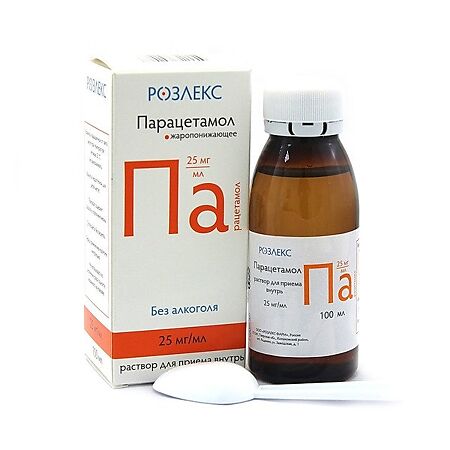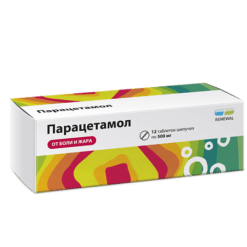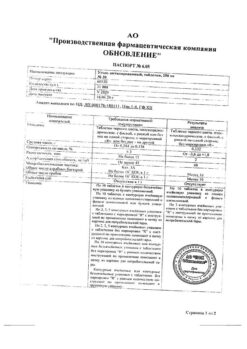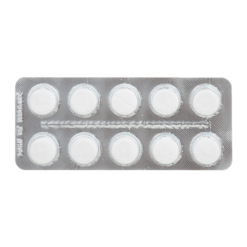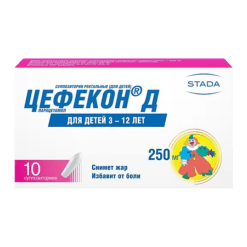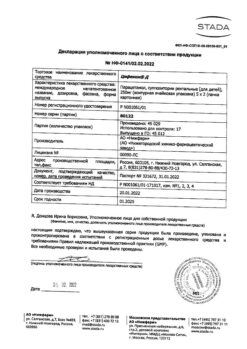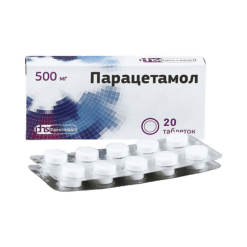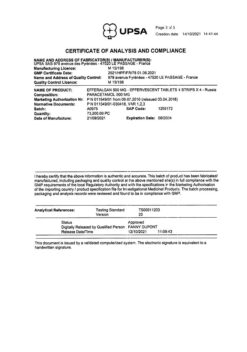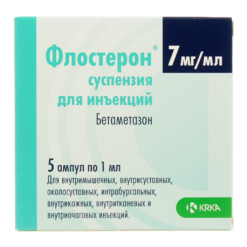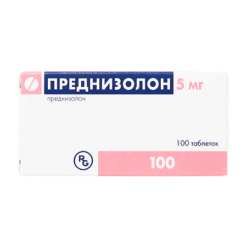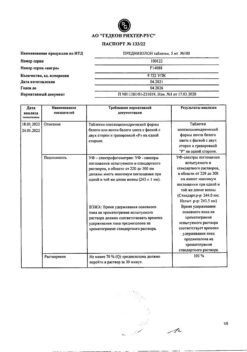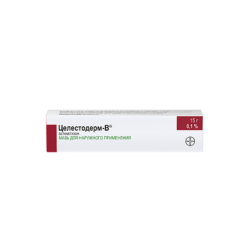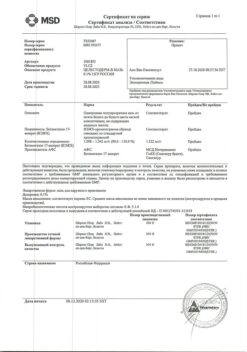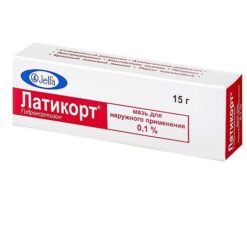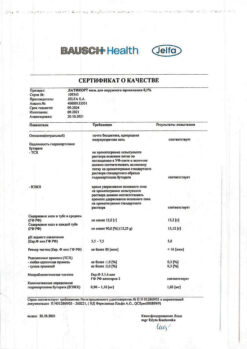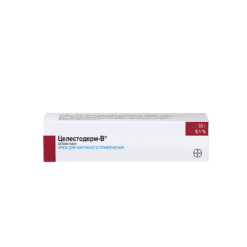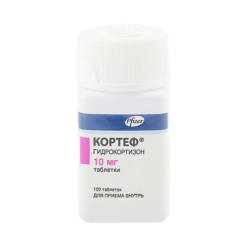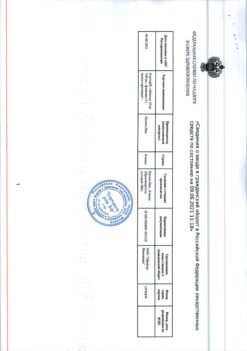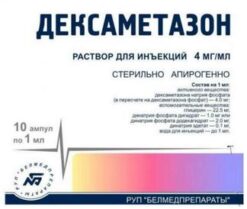No products in the cart.
Paracetamol, 100 ml
€2.08 €1.89
Description
Pharmacological group: analgesic non-narcotic drug
Paracetamol has antipyretic and analgesic effects. Non narcotic analgesic, it blocks cyclooxygenase (COX) I and II mainly in the central nervous system, affecting the centers of pain and thermoregulation. In inflamed tissues, cellular peroxidases neutralize the effect of paracetamol on COX, which explains the almost complete lack of anti-inflammatory effect. Since paracetamol has extremely little effect on the synthesis of prostaglandins in peripheral tissues, it does not change water-electrolyte metabolism and does not cause damage to the mucosa of the gastrointestinal tract.
Hence, paracetamol is particularly suitable for patients with a history of gastrointestinal disease (such as in patients with a history of gastrointestinal bleeding or in elderly patients) or in patients taking concomitant medications where inhibition of peripheral prostaglandins may be undesirable.
Indications
Indications
Used in children from 3 months to 12 years as:
antipyretic – to reduce elevated body temperature against the background of colds, flu and childhood infectious diseases (including chicken pox, mumps, measles, rubella, scarlet fever);
pain reliever – for toothache, including teething, headache, earache with otitis media and sore throat.
For children 2-3 months of age, a single dose is possible to reduce fever after vaccination.
If the temperature does not decrease, you should consult a doctor.
Pharmacological effect
Pharmacological effect
Pharmacological group: analgesic non-narcotic drug
Paracetamol has antipyretic and analgesic effects. A non-narcotic analgesic, it blocks cyclooxygenase (COX) I and II mainly in the central nervous system, affecting the centers of pain and thermoregulation. In inflamed tissues, cellular peroxidases neutralize the effect of paracetamol on COX, which explains the almost complete absence of anti-inflammatory effect. Since paracetamol has an extremely small effect on the synthesis of prostaglandins in peripheral tissues, it does not change water-electrolyte metabolism and does not cause damage to the mucous membrane of the gastrointestinal tract.
Therefore, paracetamol is particularly suitable for patients with a history of gastrointestinal disease (such as patients with a history of gastrointestinal bleeding or elderly patients) or patients taking concomitant medications where inhibition of peripheral prostaglandins may be undesirable.
Special instructions
Special instructions
If the febrile syndrome continues during the use of paracetamol for more than 3 days and pain syndrome for more than 5 days, a doctor’s consultation is required.
The risk of developing liver damage increases in patients with alcoholic hepatosis. Distorts laboratory test results for the quantitative determination of glucose and uric acid in plasma.
During long-term treatment, monitoring of the peripheral blood picture and the functional state of the liver is necessary.
Children and adults with chronic diseases.
Impact on the ability to drive vehicles and operate machinery
There is no data on the effect of paracetamol on the ability to drive a car or use other machinery. However, given possible adverse reactions, it is recommended to exercise caution when taking paracetamol when driving vehicles or using other machinery.
Active ingredient
Active ingredient
Paracetamol
Composition
Composition
For 1 ml of oral solution:
active ingredient:
paracetamol 25.0 mg;
excipients:
sucrose 300.0 mg;
propylene glycol 400.0 mg;
methyl parahydroxybenzoate 0.8 mg;
citric acid 0.1 mg;
vanillin 1.0 mg;
purified water to 1.0 ml.
Pregnancy
Pregnancy
Animal and human studies have not shown any risk of using the drug in pregnant women or harmful effects of the drug on the development of the embryo and fetus. Paracetamol can be used during pregnancy, but it is advisable to use the minimum effective dose and for the shortest possible course.
Breastfeeding period
Passes into breast milk in small quantities. Studies have not established the harmful effects of paracetamol on a child’s body during breastfeeding, however, it must be used with caution.
Contraindications
Contraindications
History of hypersensitivity to paracetamol or any other component of the drug:
– age younger than 2 months;
– severe dysfunction of the liver and kidneys.
With caution:
Renal and liver failure of mild to moderate severity, benign hyperbilirubinemia (including Gilbert’s syndrome), deficiency of the enzyme glucose-6-phosphate dehydrogenase, dehydration, hypovolemia, anorexia, bulimia and cachexia (insufficient supply of glutathione in the liver), viral hepatitis, alcoholic liver damage, alcoholism, pregnancy, breastfeeding, elderly age, early infancy (up to 3 months).
Before you start taking paracetamol, you should consult your doctor.
Side Effects
Side Effects
Blood and lymphatic system disorders
Very rare: thrombocytopenia, methemoglobinemia, anemia, hemolytic anemia, leukopenia, neutropenia.
Frequency unknown: pancytopenia, agranulocytosis.
Immune system disorders: Very rare: skin rash, itching, angioedema, Stevens-Johnson syndrome, toxic epidermal necrolysis (Lyell’s syndrome), anaphylaxis.
Cardiac and vascular disorders: Very rare: hypotension, decreased or increased prothrombin index.
Respiratory, thoracic and mediastinal disorders: Very rare: bronchospasm (in patients with hypersensitivity to acetylsalicylic acid and other non-steroidal anti-inflammatory drugs).
Gastrointestinal disorders: Rare: abdominal pain, diarrhea, dyspepsia, bloating.
Disorders of the liver and biliary tract
Very rare: impaired liver function, increased transaminase levels.
Frequency unknown: liver failure.
Renal and urinary tract disorders: Not known: interstitial nephritis, papillary necrosis, increased creatinine (mostly secondary to hepatorenal syndrome).
With long-term use in large doses, hepatotoxic and nephrotoxic effects are possible.
If any of these side effects occur, stop taking the drug and consult your doctor immediately.
Interaction
Interaction
If you or your child are already taking other medications, you should consult your doctor before starting to take paracetamol.
Inducers of liver microsomal enzymes or potentially hepatotoxic substances (for example, alcohol, rifampicin, isoniazid, hypnotics and antiepileptic drugs, including phenobarbital, phenytoin and carbamazepine) increase the toxicity of paracetamol and can lead to liver damage even at non-toxic doses of paracetamol, so liver function should be monitored.
Phenytoin reduces the effectiveness of paracetamol, therefore, patients taking phenytoin should avoid frequent use of paracetamol, especially in high doses.
Reduces the effectiveness of uricosuric drugs.
Chloramphenicol. Paracetamol may increase the risk of elevated chloramphenicol concentrations.
Zidovudine. Paracetamol may increase the risk of developing neutropenia, and therefore hematological parameters should be monitored. Simultaneous use is possible only after consulting a doctor.
Probenecid. Probenecid almost halves the clearance of paracetamol, which requires a reduction in the dose of paracetamol.
Indirect anticoagulants
Repeated use of paracetamol for more than 4 days increases the anticoagulant effect. The international normalized ratio (INR) should be monitored during and after the cessation of concomitant use of paracetamol (especially in high doses and/or for a long time) and coumarin derivatives. Irregular use of paracetamol does not have a significant effect. Propantheline and other drugs that slow down gastric emptying reduce the rate of absorption of paracetamol, which may delay or reduce the onset of the effect.
Metoclopramide and domperidone increase the rate of absorption of paracetamol and, accordingly, the onset of analgesic and antipyretic effects.
Long-term use of barbiturates reduces the effectiveness of paracetamol. Ethanol contributes to the development of acute pancreatitis.
Long-term combined use of paracetamol and other NSAIDs increases the risk of developing “analgesic” nephropathy and renal papillary necrosis, and the onset of end-stage renal failure.
Simultaneous long-term administration of paracetamol in high doses and salicylates increases the risk of developing kidney or bladder cancer. Diflunisal increases the plasma concentration of paracetamol by 50% – the risk of developing hepatotoxicity.
Myelotoxic drugs increase the manifestations of hematotoxicity of the drug.
Overdose
Overdose
Symptoms
The clinical picture of acute overdose develops within 24 hours after taking paracetamol. Gastrointestinal disorders appear (nausea, vomiting, loss of appetite, discomfort in the abdominal cavity and (or) abdominal pain), pallor of the skin. When simultaneous administration of 7.5 g or more to adults or more than 140 mg/kg to children, cytolysis of hepatocytes occurs with complete and irreversible liver necrosis, the development of liver failure, metabolic acidosis and encephalopathy, which can lead to coma and death.
Ingestion of 5 g or more of paracetamol can lead to liver damage in the presence of risk factors (long-term treatment with carbamazepine, phenobarbital, phenytoin, primidone, rifampicin, St. John’s wort or other drugs that are inducers of microsomal liver enzymes; ethanol abuse, glutathione deficiency, digestive disorders, cystic fibrosis, HIV infection, starvation, cachexia). 12-48 hours after the administration of paracetamol, there is an increase in the activity of microsomal liver enzymes, lactate dehydrogenase, bilirubin concentration and a decrease in prothrombin content. Clinical symptoms of liver damage appear 2 days after an overdose of the drug and reach a maximum on days 4-6.
In case of overdose, intoxication is possible, especially in elderly patients, children, patients with liver diseases (caused by chronic alcoholism), in patients with nutritional disorders, as well as in patients taking inducers of microsomal liver enzymes, and fulminant hepatitis, liver failure, cholestatic hepatitis, cytolytic hepatitis, sometimes with a fatal outcome, may develop. In severe cases of overdose, encephalopathy (impaired brain function), cerebral edema, bleeding, hypoglycemia, and even death may develop as a result of liver failure. It is possible to develop acute renal failure with acute tubular necrosis, the characteristic signs of which are pain in the lumbar region, hematuria (admixture of blood or red blood cells in the urine), proteinuria (increased protein in the urine), while severe liver damage may be absent. There have been cases of heart rhythm disturbances and pancreatitis.
Treatment
Immediate hospitalization. If you suspect an overdose, even in the absence of pronounced first symptoms, you must stop using paracetamol and immediately seek medical help. The level of paracetamol in the blood plasma should be determined, but not earlier than 4 hours after the overdose (earlier results are unreliable). Laboratory studies of the activity of microsomal liver enzymes should be carried out at the beginning of treatment and then every 24 hours. The introduction of SH-group donors and precursors for glutathione synthesis – methionine and acetylcysteine - is most effective in the first 8 hours.
Symptomatic treatment
Within 1 hour after an overdose, it is recommended to lavage the stomach and take enterosorbents (activated carbon, etc.). In most cases, the activity of microsomal liver enzymes returns to normal within 1-2 weeks. In very severe cases, a liver transplant may be required. Administration of acetylcysteine within 24 hours of an overdose. The maximum protective effect is provided during the first 8 hours after an overdose; over time, the effectiveness of the antidote drops sharply.
If necessary, acetylcysteine is administered intravenously. In the absence of vomiting, methionine can be used before the patient is admitted to the hospital.
The need for additional therapeutic measures (further administration of methionine, intravenous administration of acetylcysteine) is determined depending on the concentration of paracetamol in the blood, as well as the time elapsed after its administration. Treatment of patients with severe liver dysfunction 24 hours after taking paracetamol should be carried out in conjunction with specialists from a poison control center or specialized liver disease department.
Storage conditions
Storage conditions
In a place protected from light, at a temperature not exceeding 25 ° C (do not freeze).
Keep out of the reach of children.
Manufacturer
Manufacturer
Rozlex Pharm, Russia
Additional information
| Conditions of storage | In the dark place at a temperature not exceeding 25 °С (do not freeze). Store out of the reach of children. |
|---|---|
| Manufacturer | Roslex Farm, Russia |
| Medication form | oral solution |
| Brand | Roslex Farm |
Other forms…
Related products
Buy Paracetamol, 100 ml with delivery to USA, UK, Europe and over 120 other countries.

